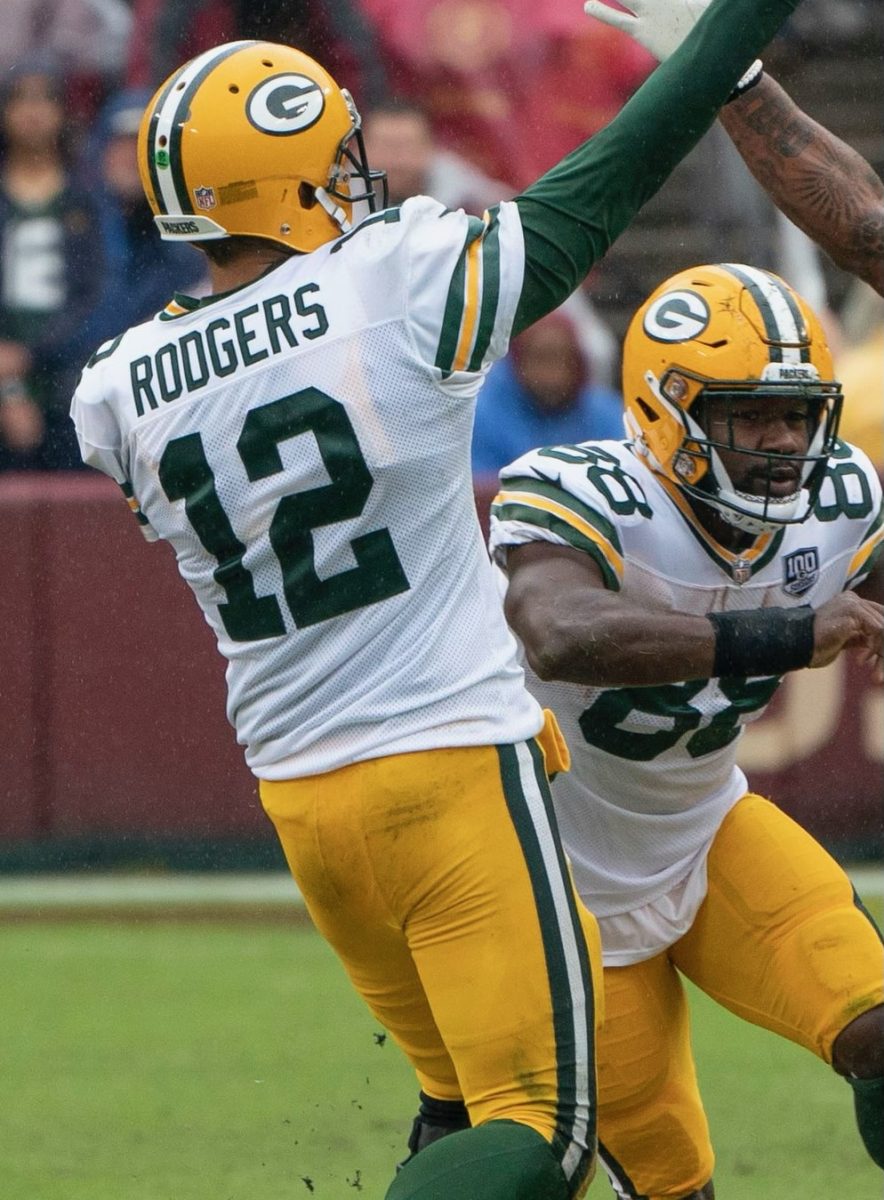Future Hall of Fame quarterback Aaron Rodgers may have played his last snap of football. On the fourth play from scrimmage, in his New York Jets debut on Monday, Sept. 11, Rodgers suffered a season-ending achilles tear.
This is a brutal blow to the hopes of not only Jets fans but the organization as a whole. After the Jets traded for the former MVP quarterback in the offseason, expectations were flying high. With standout players on both offense and defense, many football fans saw the Jets winning the AFC and potentially making it to the Super Bowl.
“I felt like they were Super Bowl contenders,” senior Drew Speier said. “I think they’ll still be fine [without Rodgers], maybe not quite as strong.”
Rodgers’ injury happened on a play where he was sacked by Buffalo Bills defensive end Leonard Floyd. After the hit, Rodgers stood up, walked around, and went down on the field. He was then carted to the locker room and emerged wearing a boot, signaling a major injury. Reports flooded social media of his injury.
“An MRI confirmed today that Aaron Rodgers officially tore his Achilles on the fourth play of his Jets’ career,” reporter Adam Schefter said via X (Twitter). “Rodgers’ season now, officially, is over. There already are questions about whether his Hall-of-Fame career is, too.”
Coming back from an achilles injury for any athlete is already difficult. Achilles injuries are very common among NFL running backs, and few are able to return to form. In his rookie season, former Jacksonville Jaguars running back James Robinson rushed for 1,070 yards and 10 touchdowns before his achilles tear. Since then he was traded to the Jets and later cut due to his lack of explosiveness. Former Chicago Bears running back Tarik Cohen met a similar fate, and recently-traded Cam Akers, now a member of the Minnesota Vikings, has not been nearly as productive in the league since his tear in 2021. Recovery will be even harder for the 39 year old Rodgers, whose age may finally catch up to him.
While achilles tears can happen anywhere at any time, many NFL players blame the leagues use of turf for the crippling injury.
“Congrats @nfl. How many more players have to get hurt on ARTIFICIAL TURF,” Green Bay Packers offensive tackle and Rodger’s former teammate David Bakhitiari said on X (Twitter) following the injury. “I’m sick of this…Do better!”
Bakhitiari’s sentiment is shared among NFL players and is based on truth. An NFLPA investigation in April 2023 revealed that these injuries are more common on turf fields. According to the study, injuries on turf fields occurred almost 0.013 more times per 100 plays than on natural grass in 2022. While this number seems small, it still makes a difference considering how many snaps a player participates in during the season. Following the injury, Lloyd Howell, the Executive Director of the NFL Players Association, released a statement regarding the fields.
“Moving all stadiums to grass surfaces is the easiest decision the NFL can make,” Howell said in his statement released on Wednesday, Sept. 13. “This is worth the investment and simply needs to change now.”
While the field conditions are an issue for the NFL’s future, Rodgers injury has put a dark cloud over the Jets future. Rodger’s replacement as of right now is the 2020 No. 2 overall pick Zach Wilson, who throughout his short career has put up disappointing numbers. Wilson has played 23 career games and has thrown only 16 touchdowns to 19 interceptions. However, head coach Robert Saleh remains confident in Wilson and the rest of his team.
“I don’t know why people are starting to put an obituary to our team name,” Coach Saleh said in a press conference on Sept. 12. “This is Zach Wilson’s team.”
The Jets season is now a question mark. How will Zach Wilson perform? They will most likely find a backup, but who? Can this team succeed without Rodgers behind center? Has Rodgers played his final snap in the NFL? The Jets will have to address all these questions and more if they want to match their preseason hype.




